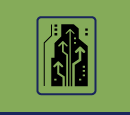

|
|
||
|
Part II: The STEM Pathways Workshop: Describing the
Change
With this strategic concern in mind, the federal
government and industry have exhibited keen interest
in developing the scientific and engineering
workforce of the 21st century. The strategic focus
is to identify new and existing programs that will
create easily navigable pathways to STEM careers by
attracting more U.S. students and broadening
participation in STEM fields. The ultimate goal is
to prepare a STEM workforce capable of meeting the
challenges of the 21st century. To explore these
issues a workshop was convened in the fall of 2003
to provide an opportunity for experts from the
relevant communities to explore the extent to which
the existing knowledge base on STEM workforce issues
can inform the creation and expansion of such
pathways. The workshop was organized around the five
goals shown below. |
